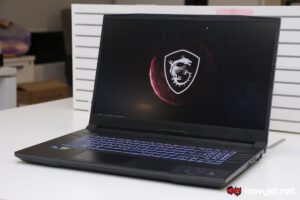
You’ve probably heard me say this several times prior, but with the ongoing chip and GPU shortage, one viable alternative for gamers to scratch the PC gaming itch is to avert their gaze towards a gaming laptop, and with good reason. Instead of picking out the components by hand, the gaming laptop is and has always been, a complete package, and brands like MSI very clearly have something to offer at virtually every price point.
On that note, if you’re looking for a relatively simple, big, yet moderately powerful gaming laptop, the GL76 Pulse is worth the consideration.
Specifications
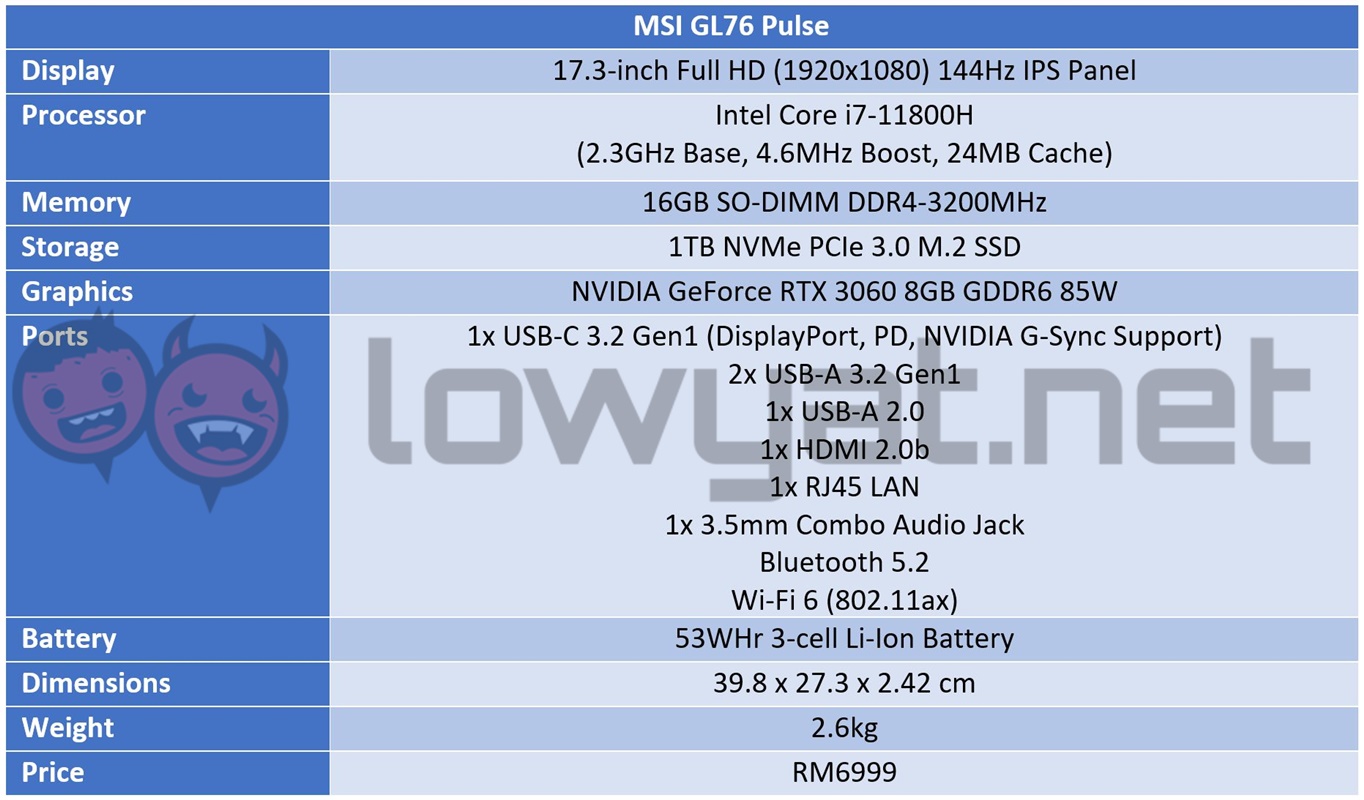
I should point out that there are three configurations for the GL76 Pulse. The model that I have here in my lab is actually the top-of-the-line SKU, and that comes with an NVIDIA GeForce RTX 3060, 16GB DDR4-3200MHz RAM, and a 1TB NVMe Gen3 SSD, of which both the latter two can be manually expanded in their capacities.
Also, seeing how the GL series is viewed as the entry-level series of MSI’s lineup, the display resolution of the GL76 Pulse maxes out at Full HD but at the very least, it’s a large 17.3-inch IPS panel, and one with a high refresh rate of 144Hz.
Design
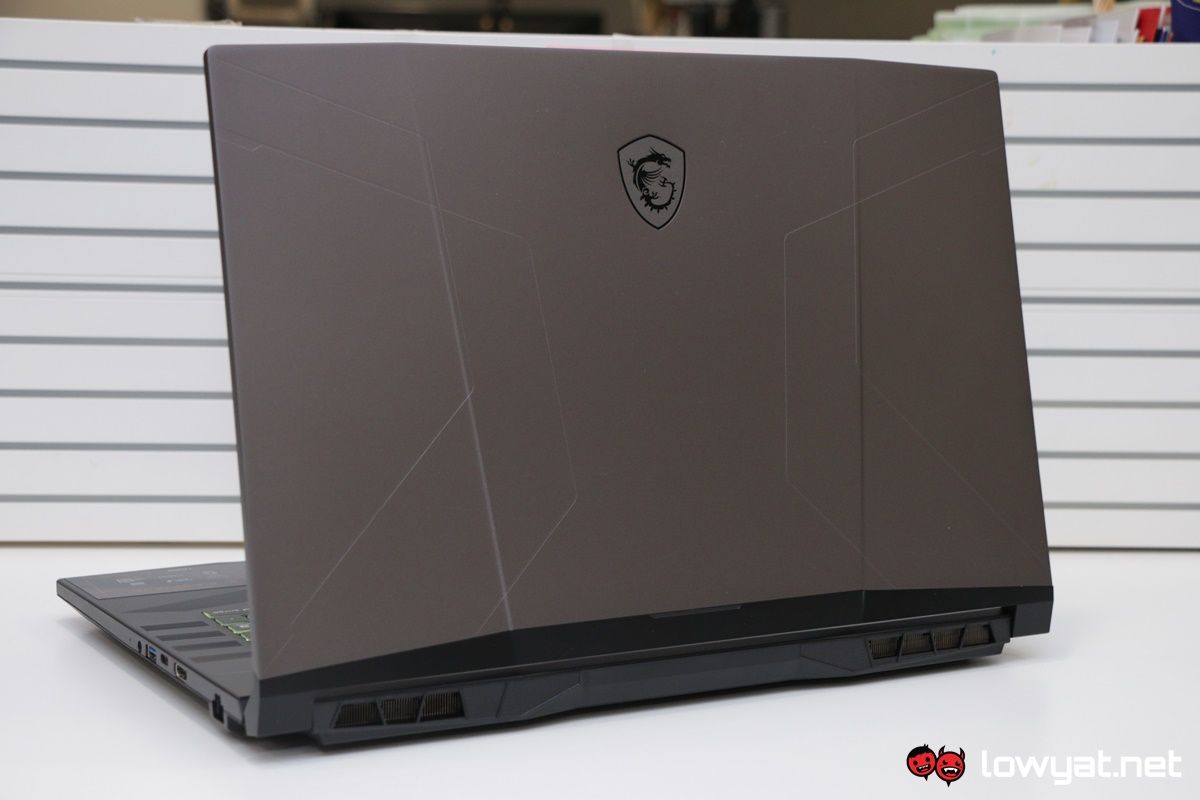
For an entry-level gaming laptop, the exterior design of the GL76 Pulse takes on a very aggressive tone, and it’s plain to see that that is how MSI has found a design it likes and sticks to it. Like the more powerful GE and GT series entries in MSI’s arsenal, the GL76 borrows angles, corners, and etching that one would usually see on a Lamborghini Reventon or Huracan.
Upon opening up the laptop, the GL76 uses a dual side-hinged design to bolt the panel to the base, which is standard practice but it comes at certain costs. Firstly, the panel itself feels wobbly and more importantly, there is a significant amount of flexing whenever I try twisting it. Moving on, you’ll be happy to know that display itself has thin bezels but only on its sides; the top is slightly thicker but that’s only because it is housing the machine’s webcam and components that make Windows Hello facial recognition a possibility.
The chassis feels both solid and hollow, at the same time.
For another matter, the base of the GL76 Pulse looks solid and feels that way, up until you try rapping the top of it with your knuckles. In doing so, it produces a hollow sound, confirming my suspicions that it is actually made with plastic and not metal. On that note, pressing down on it – especially the top half – causes it to flex too but thankfully, not too much.
One of the most appreciative things that MSI does with all laptops in its gaming lineup is how it always provides a full-sized keyboard, and the GL76 is no exception. Granted, the feature is a bit of a squeeze with all its 15.6-inch laptops, but with the 17.3-inch variants, there’s obviously a little more room to space out the keys, thus allowing for a more comfortable typing experience.
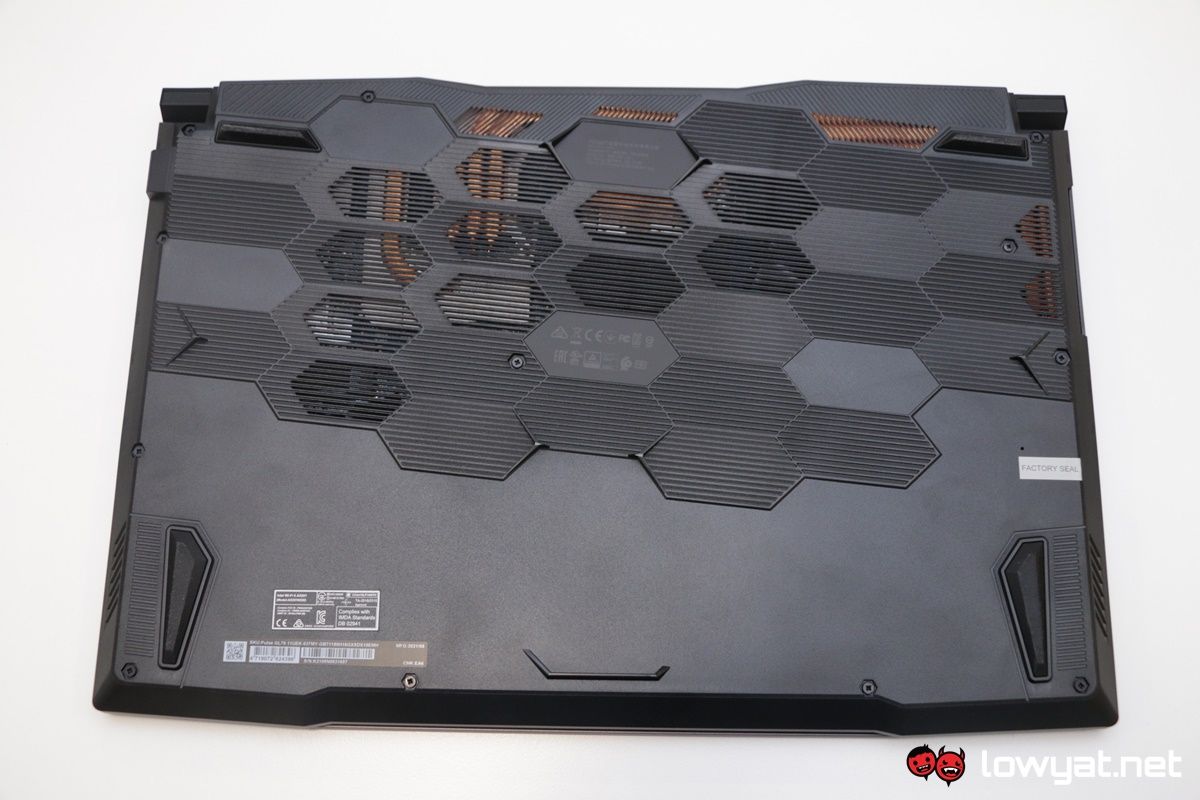
As you can expect, the keyboard does come with RGB LEDs, although it’s doesn’t seem to be the per-key variation and is simply backlit. Ports-wise, the GL76 has just one USB-C port and a couple of USB-A 3.2 ports, but surprisingly no microSD card slot.
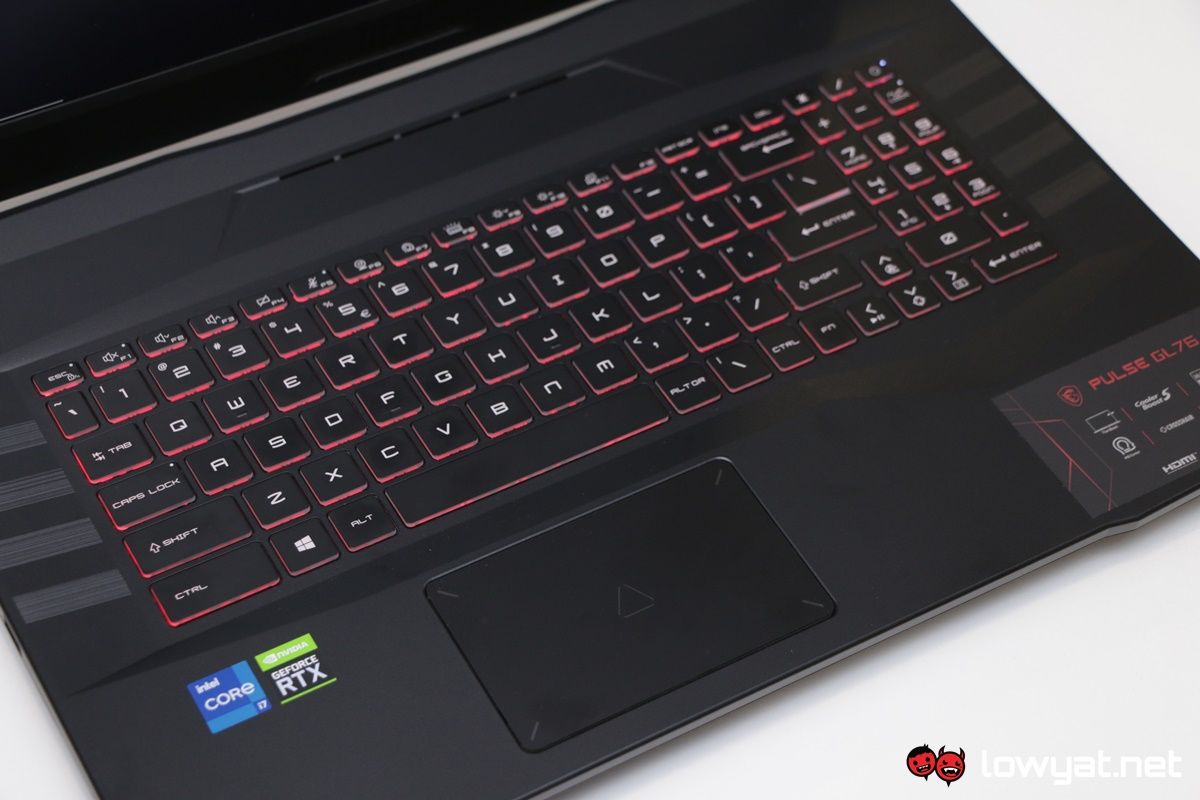
For cooling, there are vent cutouts on the left, right, and the edges of the laptop’s spine, with the latter having slightly wider exhaust ports. Flip the laptop upside down, and you’ll see the honeycomb design with cutouts at the bottom of the base, clearly to allow air to be sucked in and to cool the innards of the GL76.
User Experience
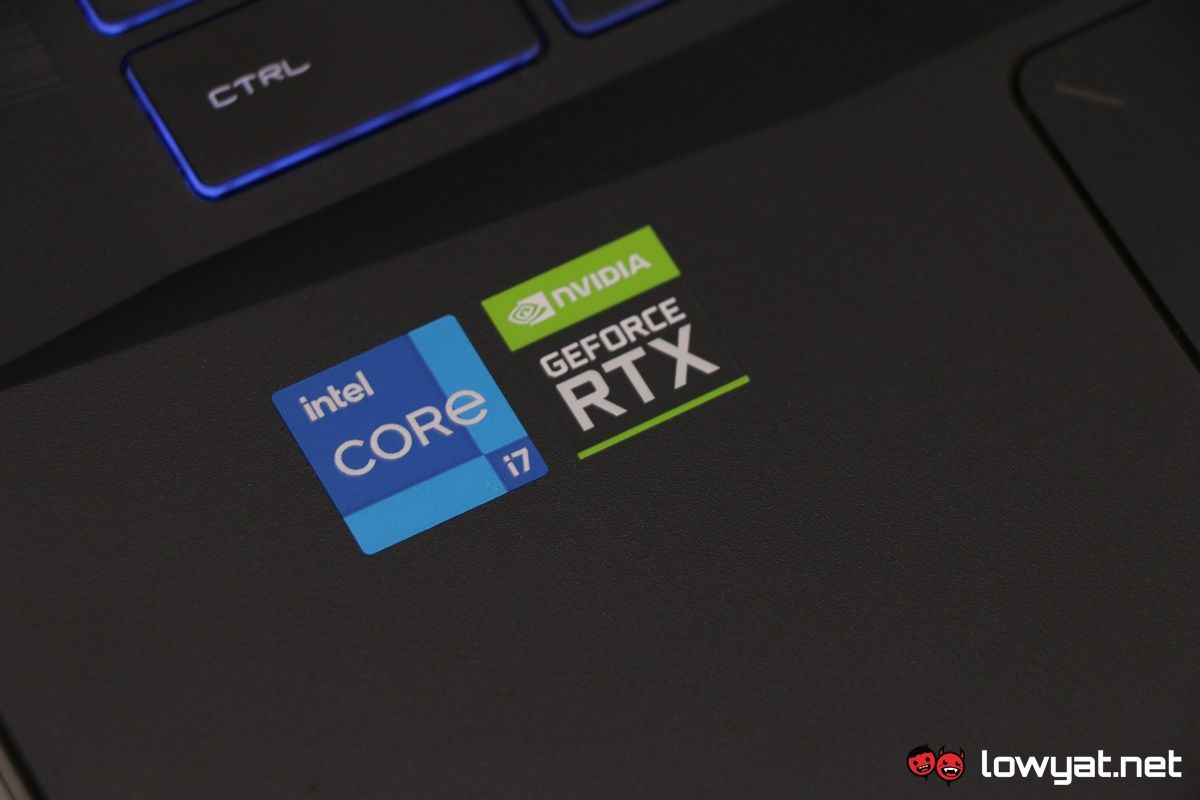
One of the major benefits of using a laptop with a wide base is the wrist comfort that comes with the extra space below the keyboard. Whether I’m typing or gaming with the GL76, I rarely feel my wrist being strained or even ache over prolonged use.
Big laptop means a wide base.
Speaking of typing, the keyboard on this laptop is rather clicky but feels a little stiff. However, there is a comfortable amount of key travel between the input and point of actuation, so my fingertips don’t really feel the impact.
Moving on, the display, while limited to Full HD resolution looks great; words are readable and images look crisp and bright, and that’s with its brightness level set to around 70% of its maximum nits. I should point out that MSI lists down a variant of the GL76 with a 1440p display and frankly speaking, I think having it in this model would make the viewing experience that bit more enjoyable.
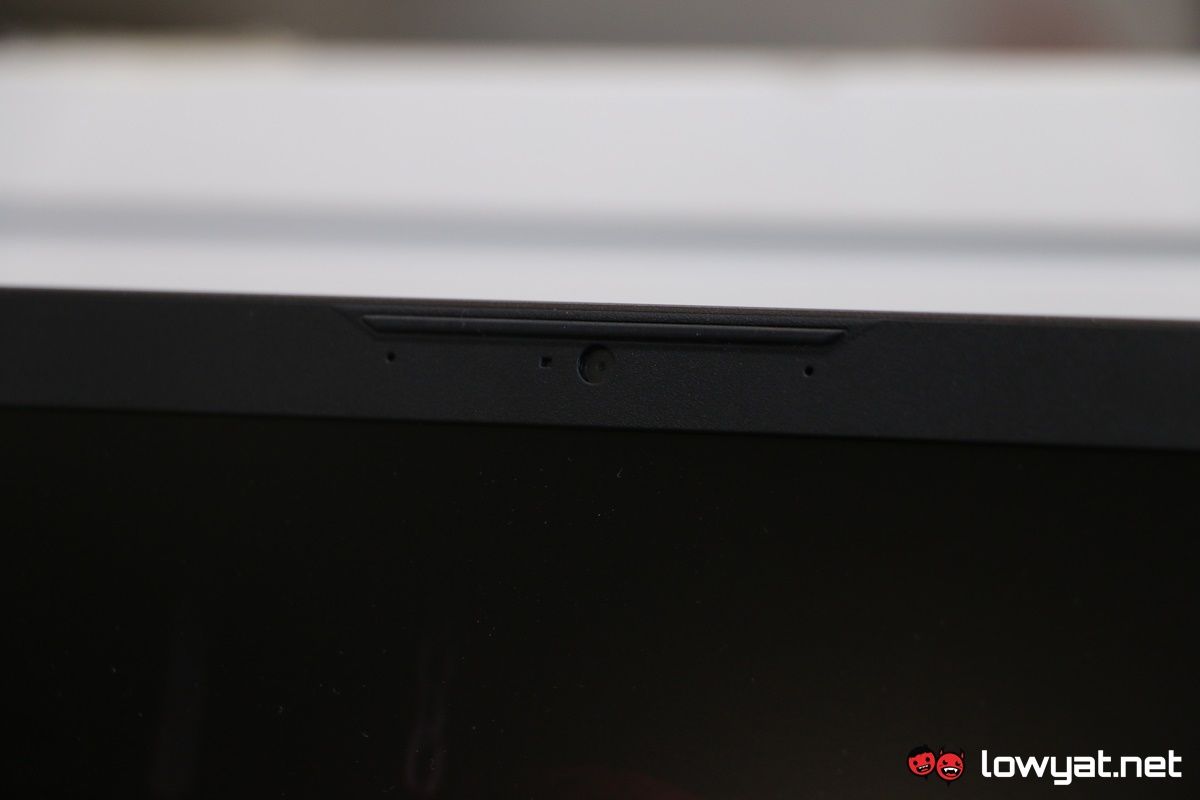
On the subject of gaming, I can confidently tell you that this laptop is a very capable going machine, albeit with a few compromises in certain titles. Across the board, both the Intel Core i7-11800H and NVIDIA GeForce RTX 3060 beneath the hood are able to handle most of the games in my list at their highest graphics preset, but with a couple of them running below the 60 fps mark. Only one title forced the RTX 3060 to show its limitations, and that was DOOM Eternal. Even without ray-tracing enabled, I am only allowed to run the game after I drop its graphics preset from Ultra Nightmare to just Ultra. The good news is that after doing so, the game still manages to keep its average framerate above 100 fps.
That brings us to one of the GL76’s flaws: the amount of heat it generates. With or without the onboard Cooler Boost technology activated, it did little to reduce the heat being generated by the 11800H and RTX 3060. Specifically, the CPU’s temperature still came very close to the 100°C mark, while the RTX 3060 peaked at 87°C. An indirect runoff of that heat is that the top of the laptop’s base also gets toasty. In the case of the GL76, that heat permeates within three-quarters of the keyboard and it can make my fingers uncomfortable, to the extent that I have no choice but to take a break to let the fans bring the ambient temperature back to acceptable levels.
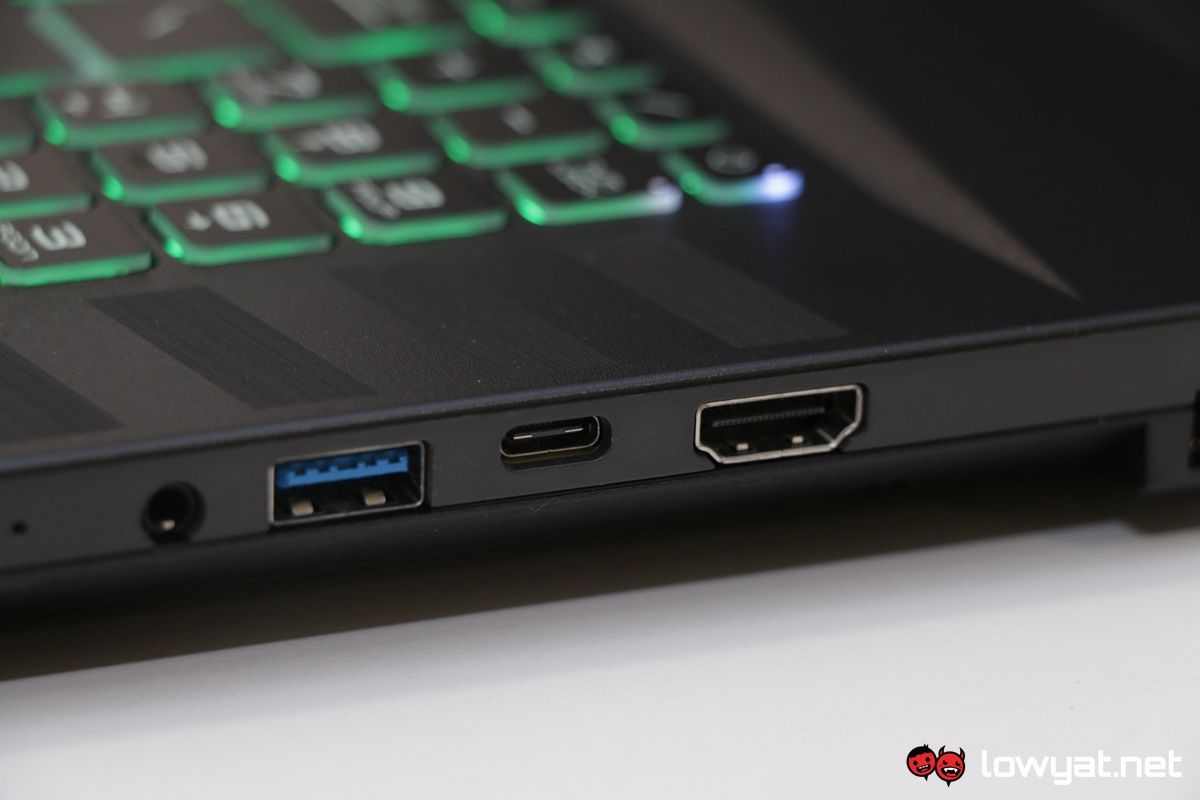
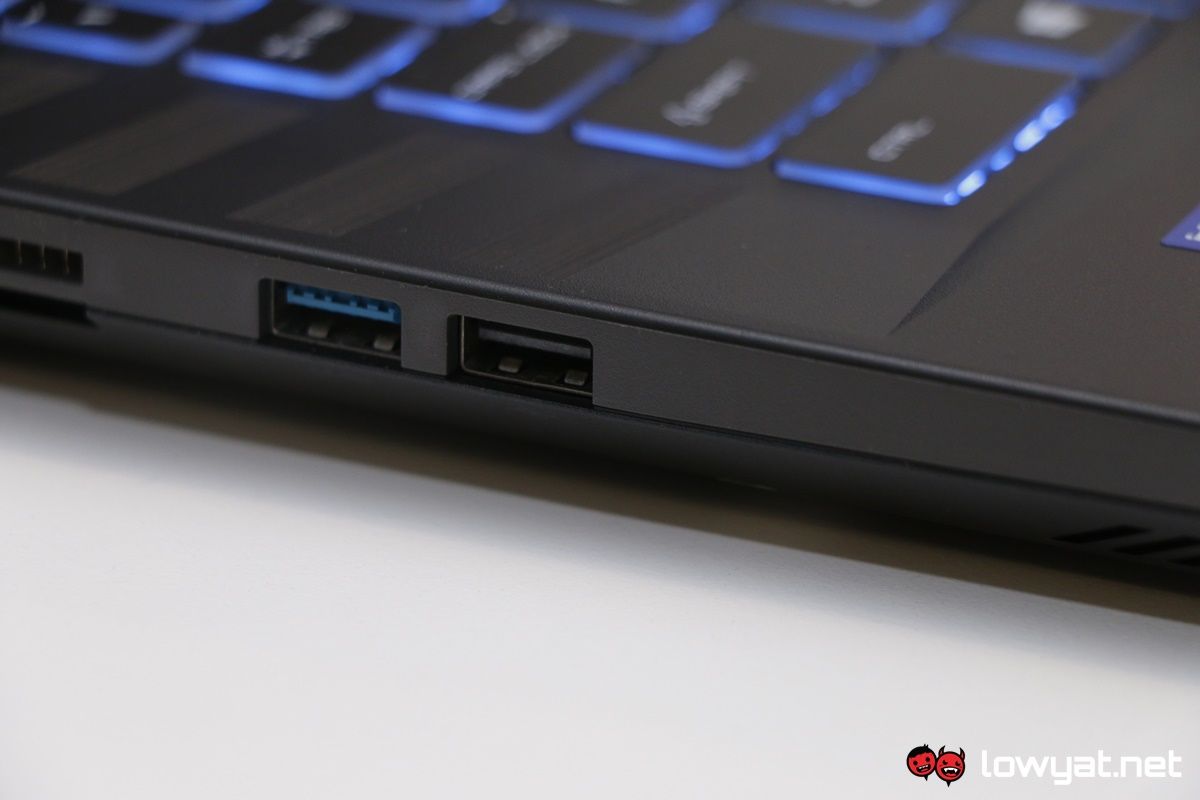
On another note, there’s also the decibel levels that are generated by the fan when they begin running at full speed. To be fair, they’re not the most aggressive I’ve heard from a gaming laptop, but that does not detract from the fact that the ones in the GL76 are still quite vocal when they get to work, and that isn’t even with Cooler Boost activated.
Less than stellar battery life.
In terms of battery life, the GL76, sadly, does not have the longest legs or endurance, but that is hardly its fault. While MSI is equipping its other series with the larger 99.9WHr batteries, the GL76’s own battery is only rated for 53.5WHr. As a result, the longest this laptop can last before calling out to the power adapter is around five hours which is, by today’s standard, just slightly below average for a laptop.
Benchmarks
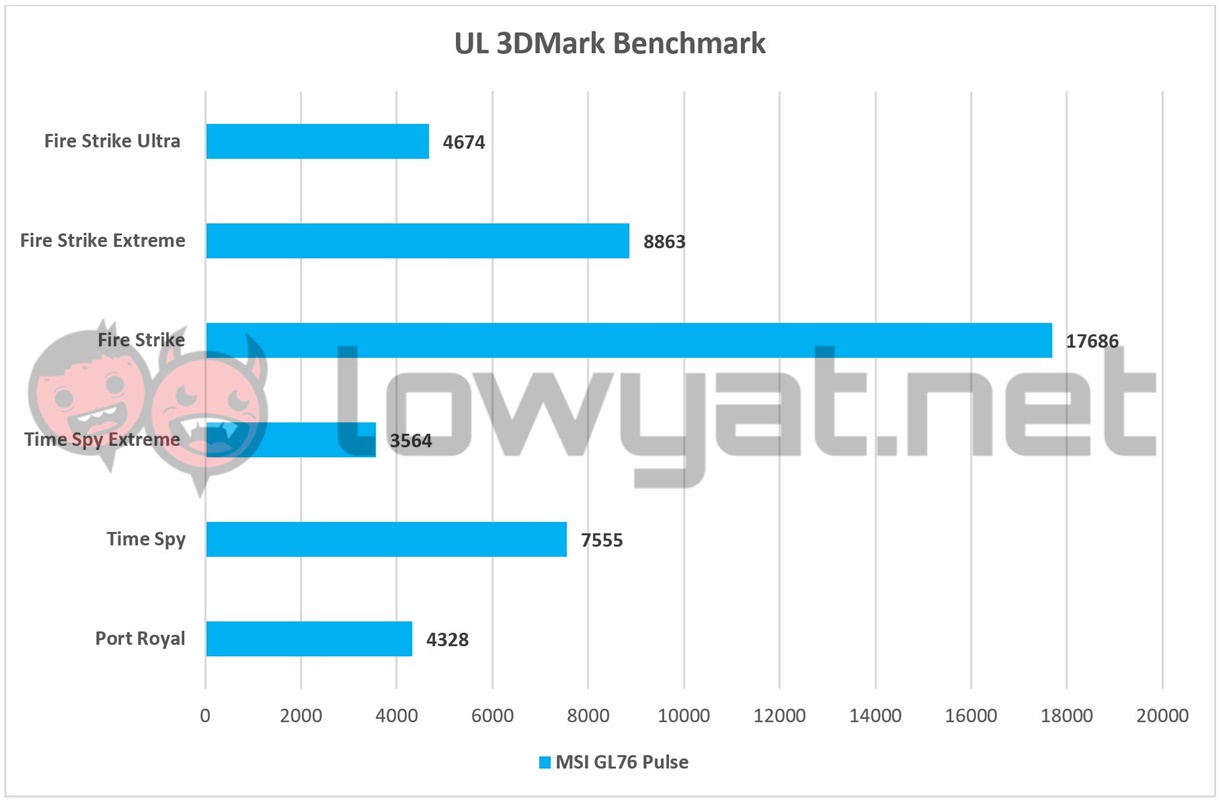
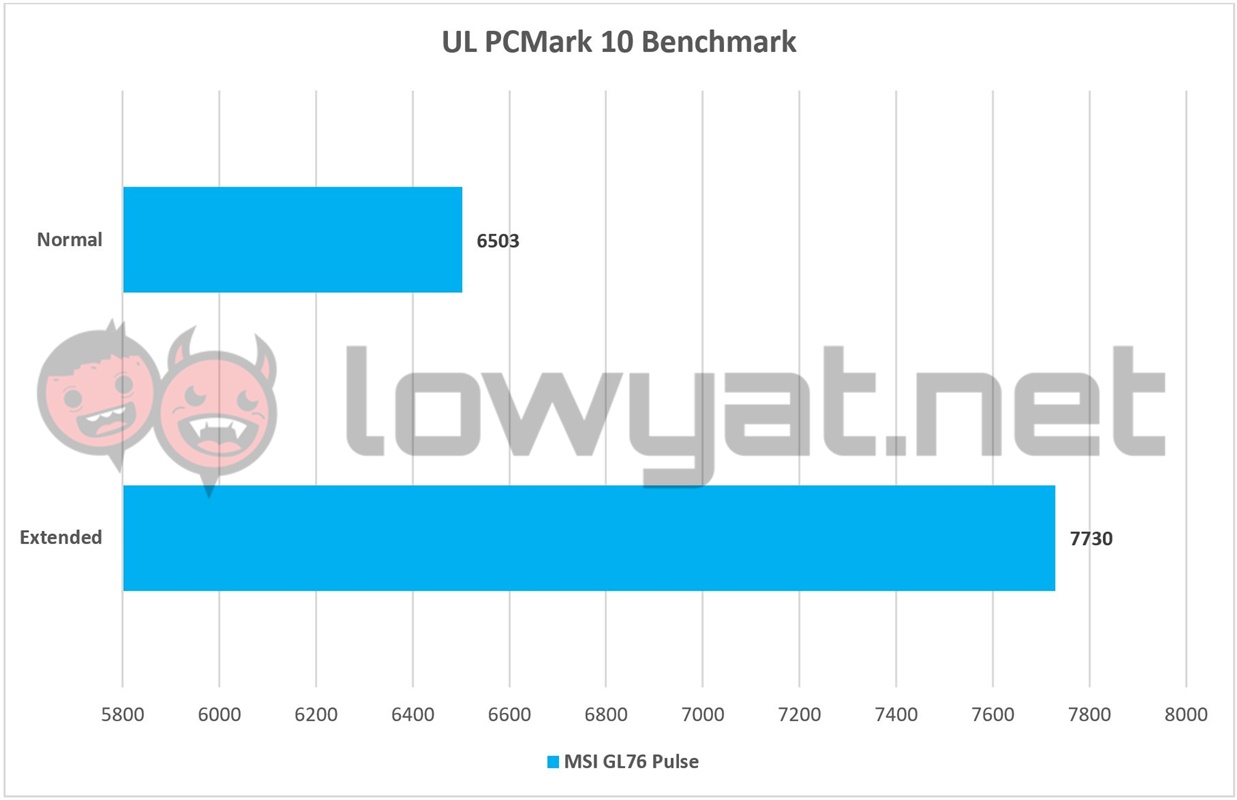
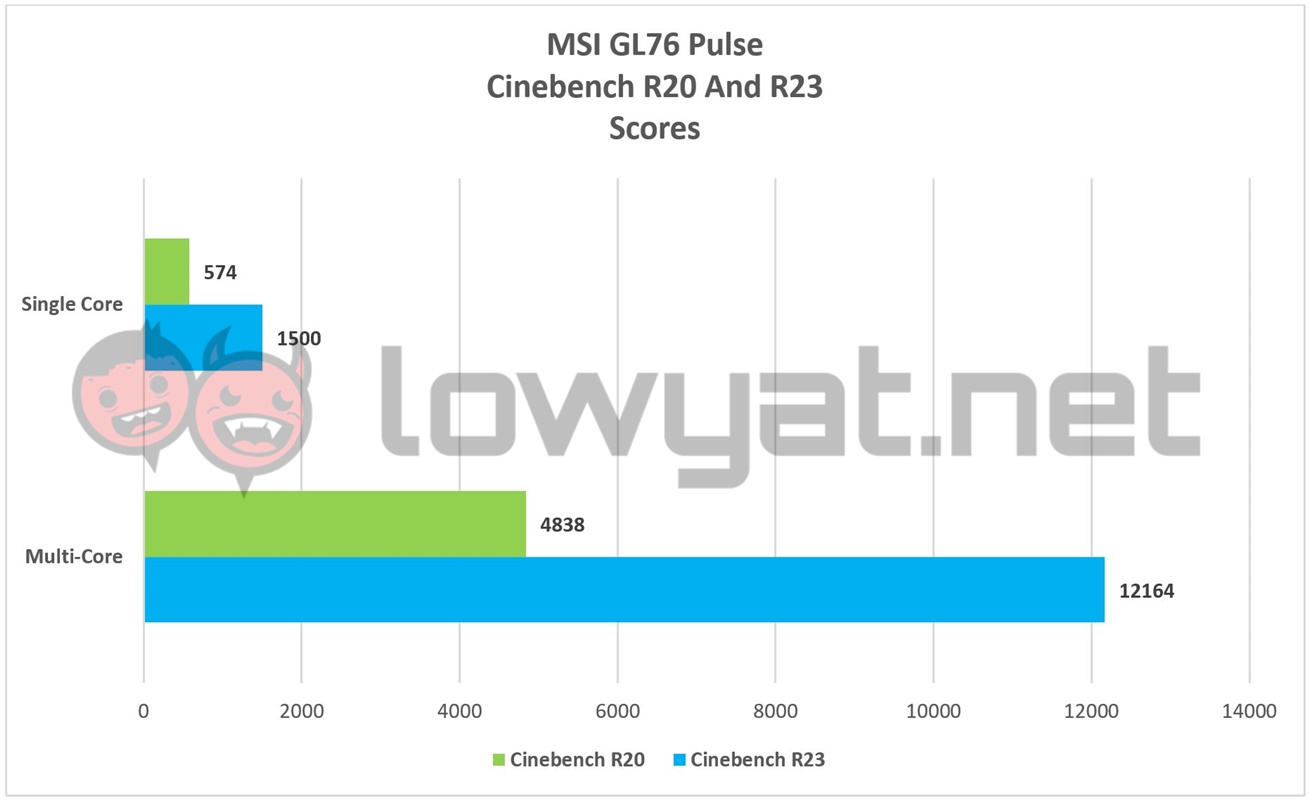
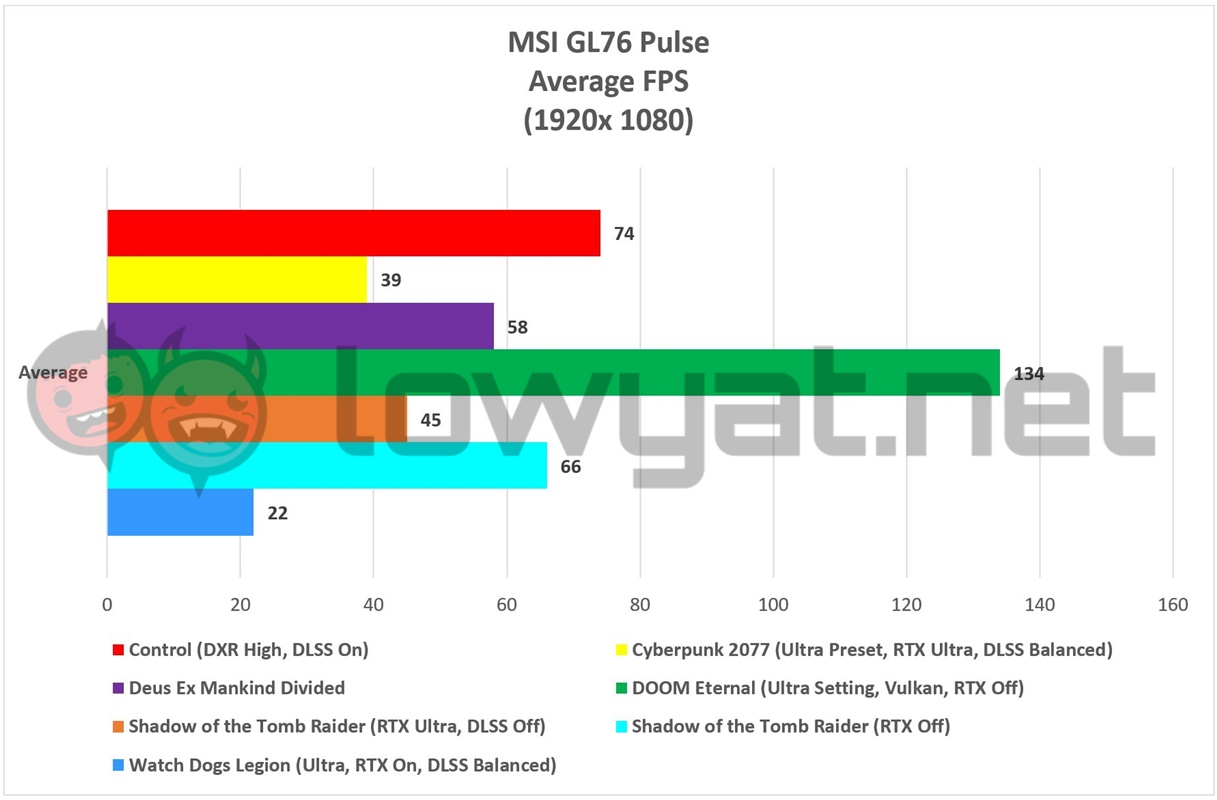
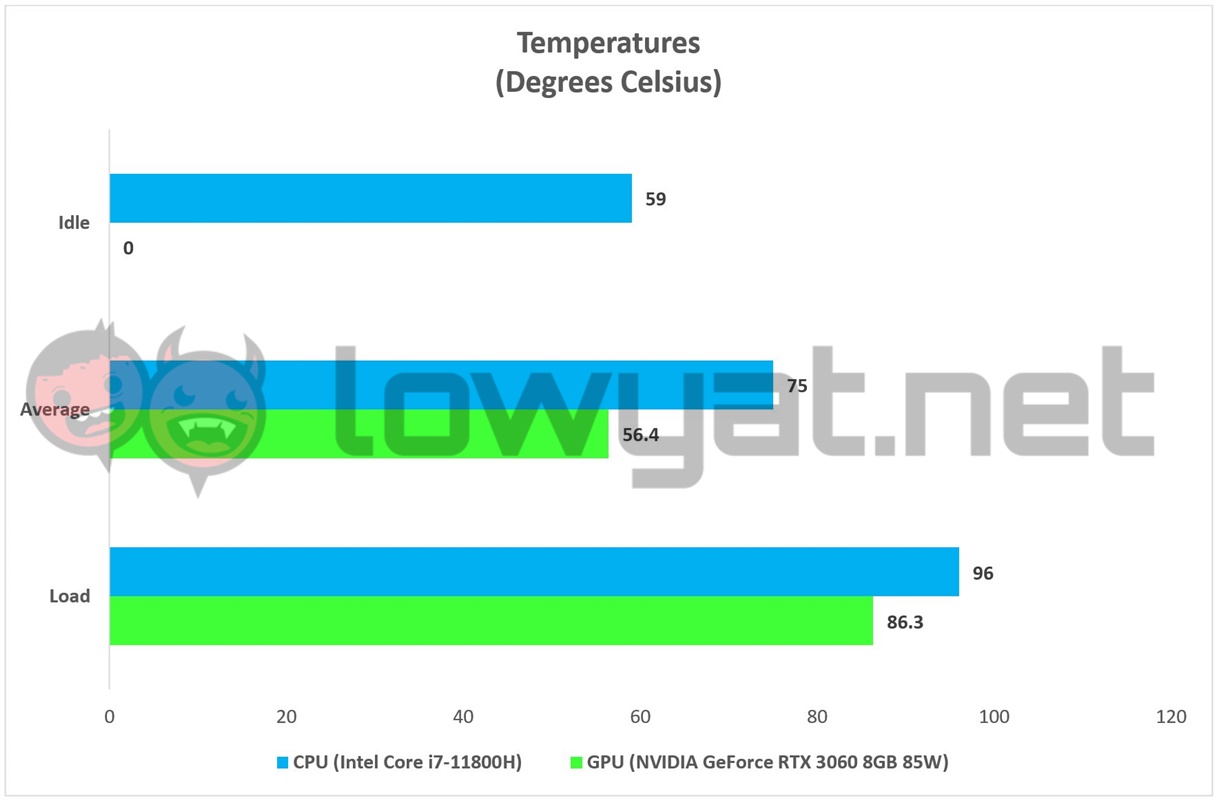
Competition
If you’re looking for an alternative that is within the same RM6999 price range or with similar hardware as the GL76 Pulse, there are options. Here are a couple of models that we found.
ASUS ROG Strix G17
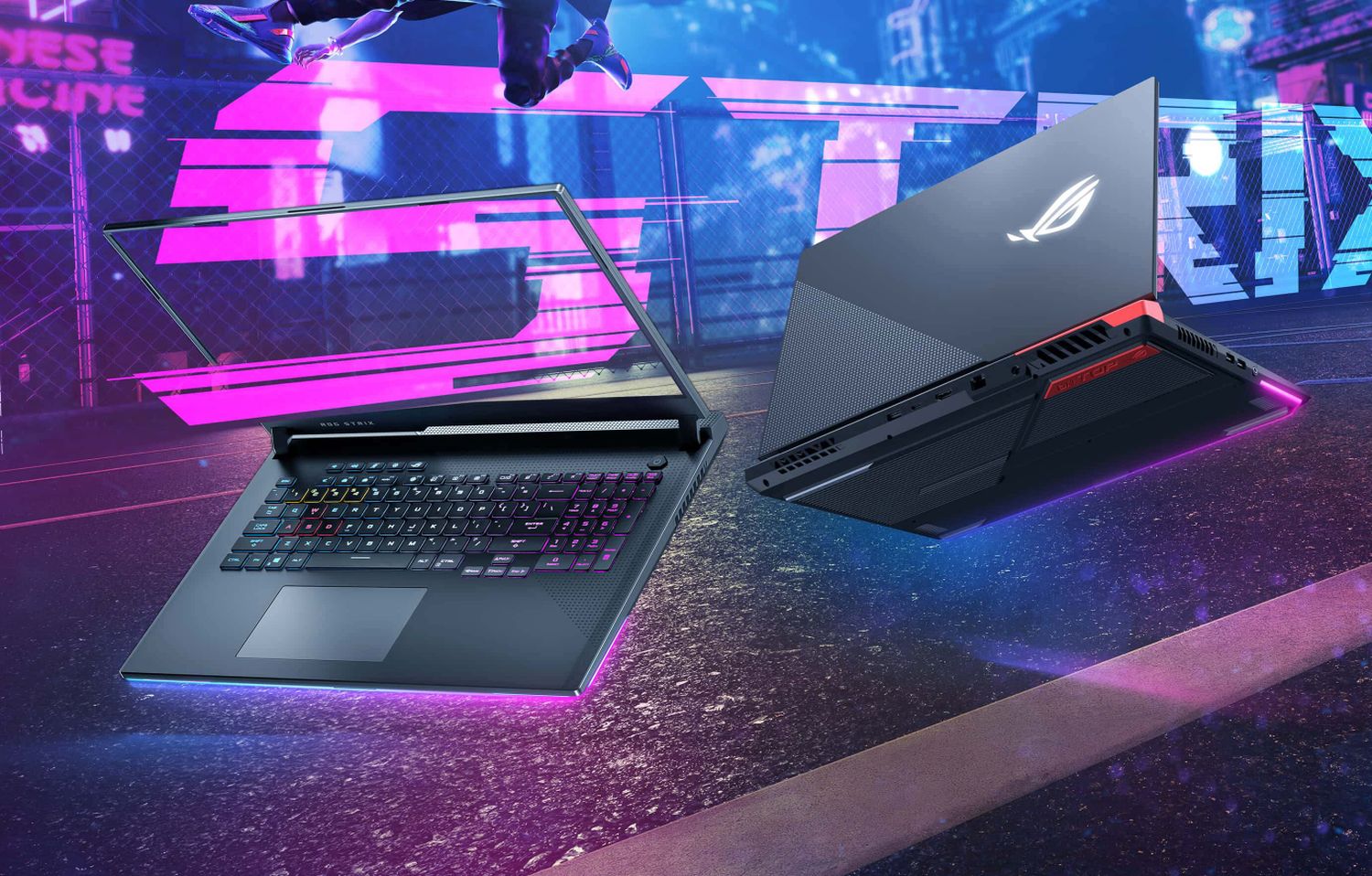
Technically speaking, ASUS’ ROG Strix G series line of gaming laptops are designed for the consumer that wants something aesthetically appealing but at the same time, don’t really mind if it’s a little bulky. On that note, the Strix G17 is the plus-size model of the series and packs some pretty serious hardware. It’s top-of-the-line SKU retails for RM7799 and for that, you get a Ryzen 9 5900HX, an RTX 3070 8GB, 1TB NVMe Gen3 SSD, and a 17.3-inch Full HD IPS panel with a 300Hz refresh rate.
Lenovo Legion 5 Pro 16
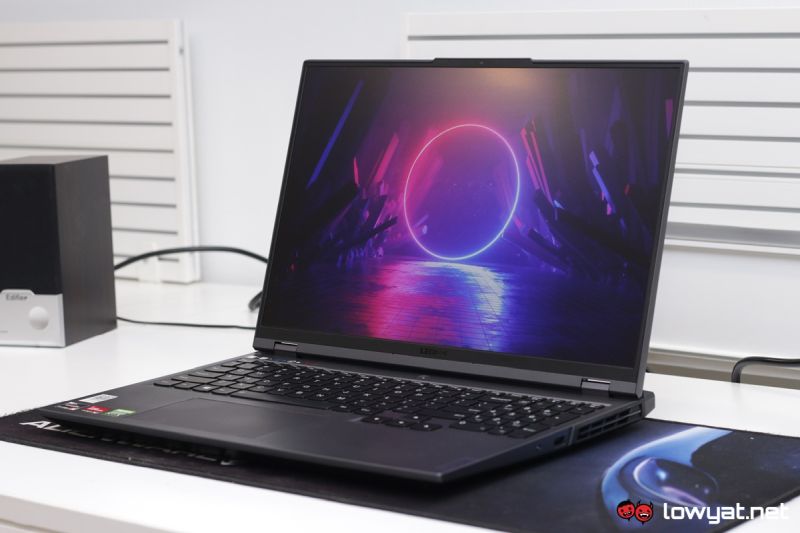
While it may not have a large 17.3-inch display, the Lenovo Legion 5 Pro 16’s display is still in a class of its own, thanks to its 16:10 aspect ratio and 16-inch WQHD, 165Hz IPS panel. Further, the laptop is powered by AMD’s Ryzen 6 5800H CPU, an NVIDIA GeForce RTX 3070 140W variant of the GPU, has a 1TB NVMe Gen3 SSD, but more to the point, it also has a much larger 82WHr 4-cell battery, although in my testing, the latter still struggled to run beyond six hours.
Then there’s its retail pricing. It starts at RM6799 but even when it is maxed out with all the trimmings, it still retails for less than RM9000.
Conclusion
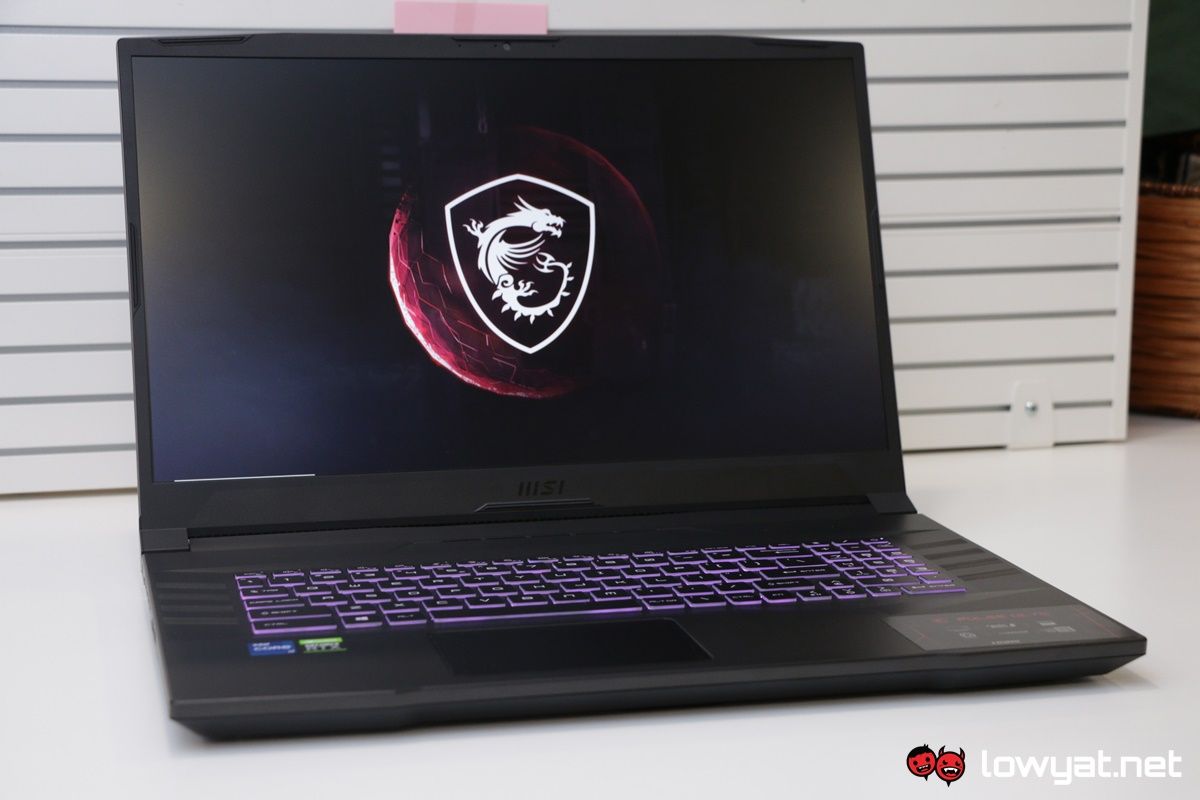
Ever since its introduction into MSI’s portfolio, the GL series is and has always been the considerably more affordable option of the bunch, and the GL76 clearly carries on the trend. Sure, it does not sport the slimmest chassis, nor does it have the most appealing design, but when push comes to shove, it certainly does the job.
The MSI GL76 Pulse is a workhorse that gets the job done without any fancy features.
For that matter, the Intel 11th generation Tiger Lake Core i7-11800H CPU is definitely no slouch and once again, the NVIDIA GeForce RTX 3060 mobile GPU inside the GL76 Pulse is more than plenty, both for triple-A or Esport titles, depending on your poison. At RM6999 though, this variant of the GL76 Pulse is ever so slightly pricier than what the competition is offering and frankly speaking, I don’t think it would eat into MSI’s profit margins that much, to concoct a top-tier SKU with an RTX 3070. And therefore, putting them squarely on fairer grounds with its rivals and their machines.
The post MSI GL76 Pulse Gaming Laptop Review: No-Nonsense, All-Around Workhorse appeared first on Lowyat.NET.
0 Commentaires